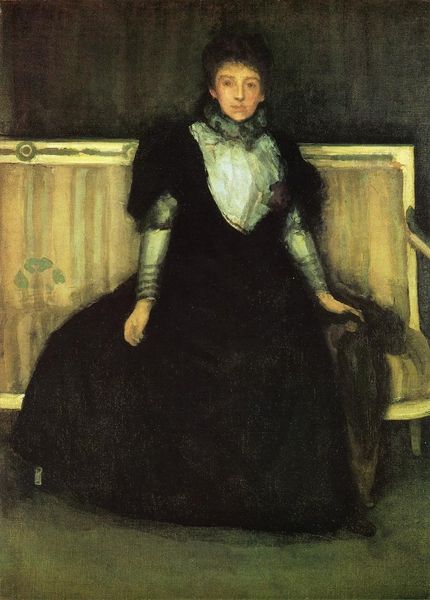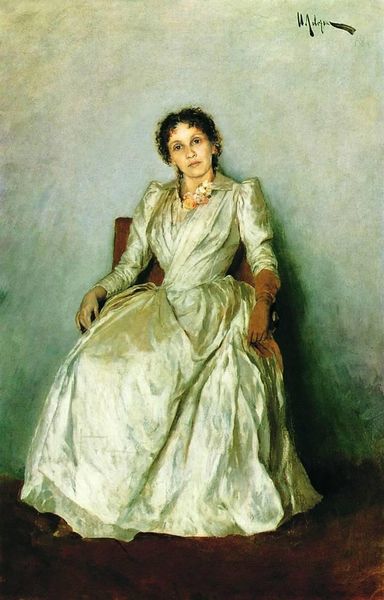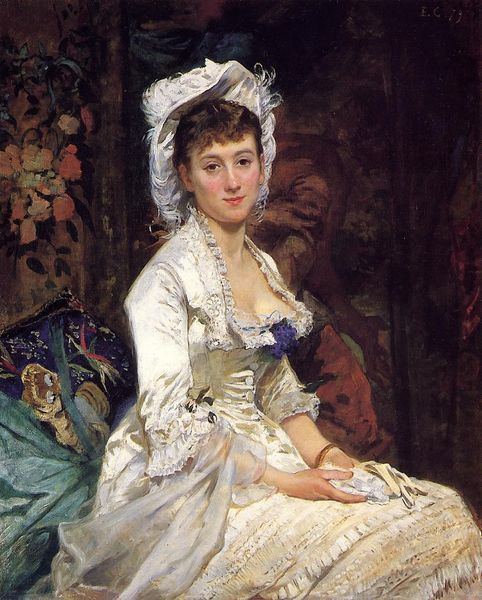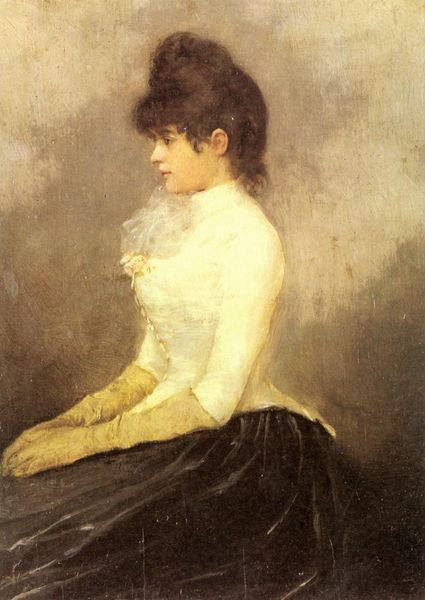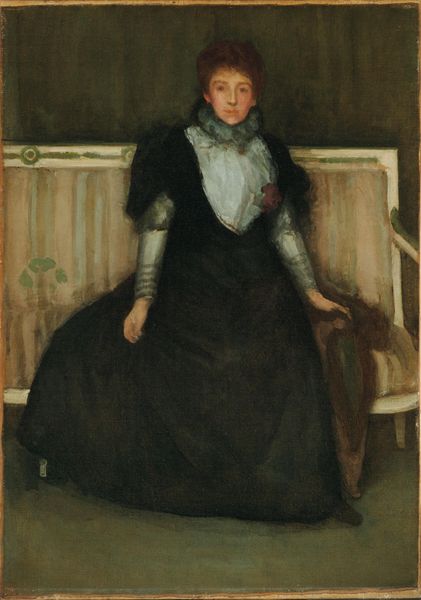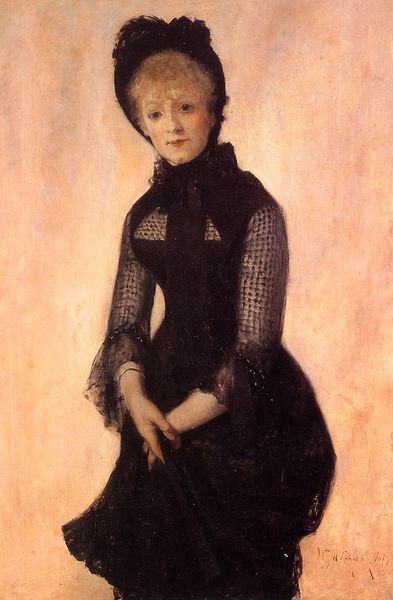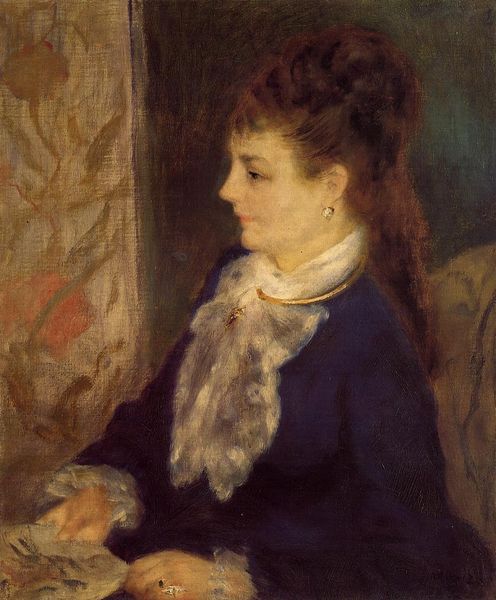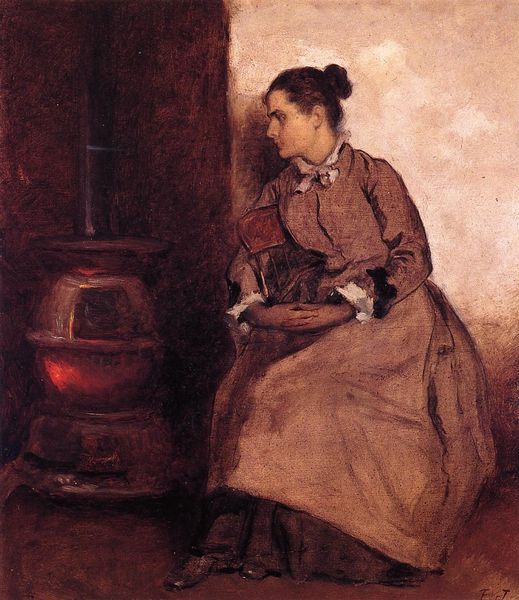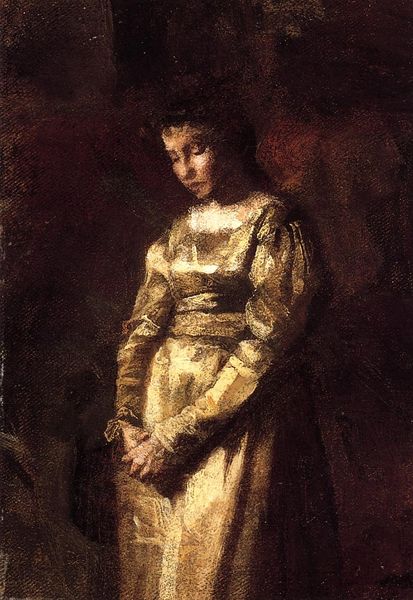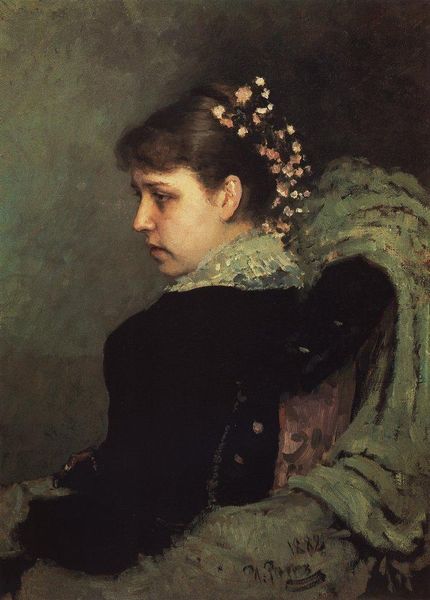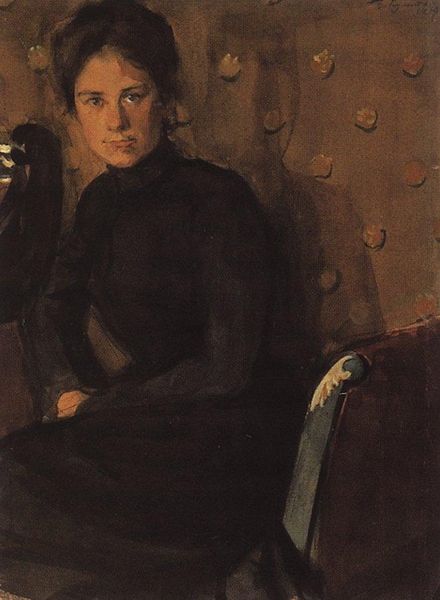
painting, oil-paint
#
portrait
#
painting
#
impressionism
#
oil-paint
#
realism
Copyright: Public domain
Editor: Here we have Edgar Degas's "Portrait of a Lady in Grey," an oil painting from 1865. She looks so serious, almost austere, in that pale dress and dark shawl. What stands out to you in this piece? Curator: Well, considering the period, the painting departs quite radically from the typical grand portraits meant to showcase status. Here, the woman isn't idealized, but rendered with an almost stark realism. Degas is positioning himself outside of traditional portraiture, making a statement, don’t you think, about how artists can depict the bourgeoisie? He avoids the usual flattery and reveals a sitter who might, perhaps, be uncomfortable with such attention. Editor: That's fascinating! So, it’s less about glorifying the subject and more about…showing her as she is? Almost a critique of social expectations? Curator: Precisely! He's acknowledging the artifice inherent in portraiture while subverting it. The muted palette and the way she's positioned, slightly off-center, draws our attention away from opulent display. It almost makes me wonder about the patron of this painting, and how Degas presented this final version of the piece. Did he ruffle any feathers, perhaps? Editor: So interesting! Now I see how Degas is engaging in a dialogue with the traditions of portraiture itself, almost making a statement about its evolving role in society. Curator: Exactly. He's questioning the established order of representation. It’s these nuances that really define art history and the shifting power dynamics of the time. Editor: Thank you, it makes so much sense! Now I see that Degas invites us to observe, and, implicitly, critique the power structures embedded in portraiture itself. Curator: A perfect synthesis. Always remember to ask whose narrative is being told and why, and art history reveals so much more.
Comments
No comments
Be the first to comment and join the conversation on the ultimate creative platform.


